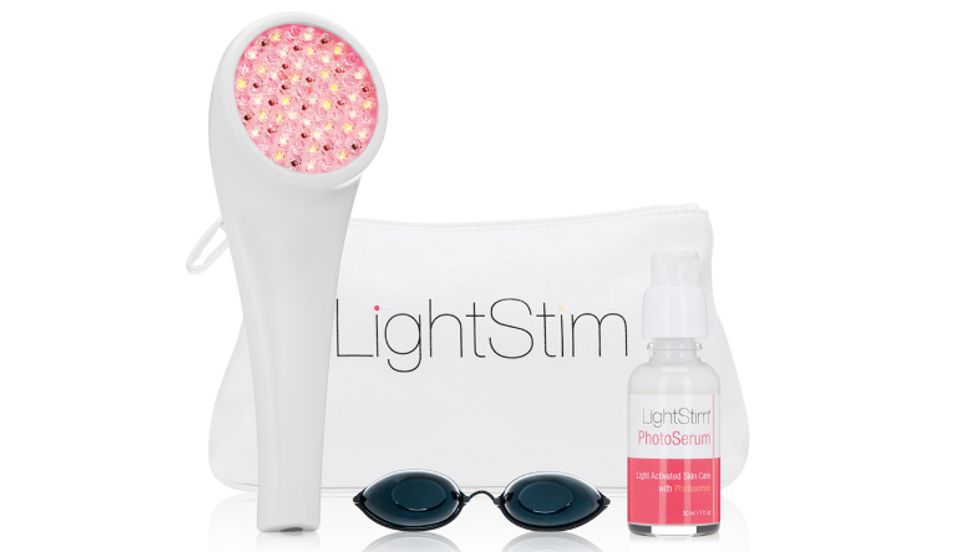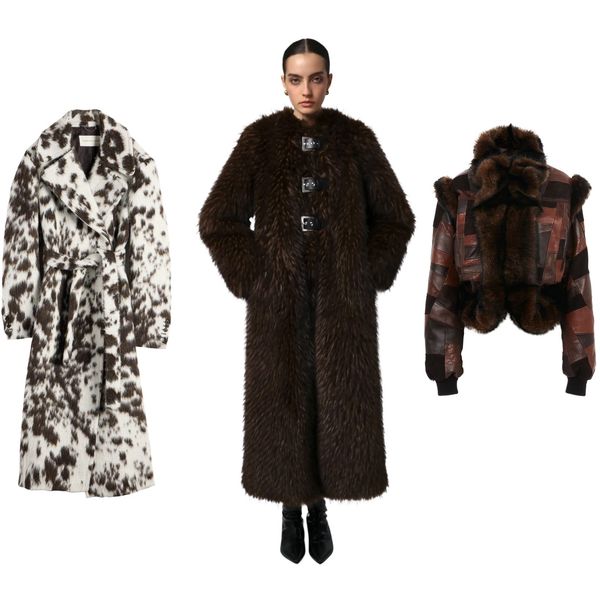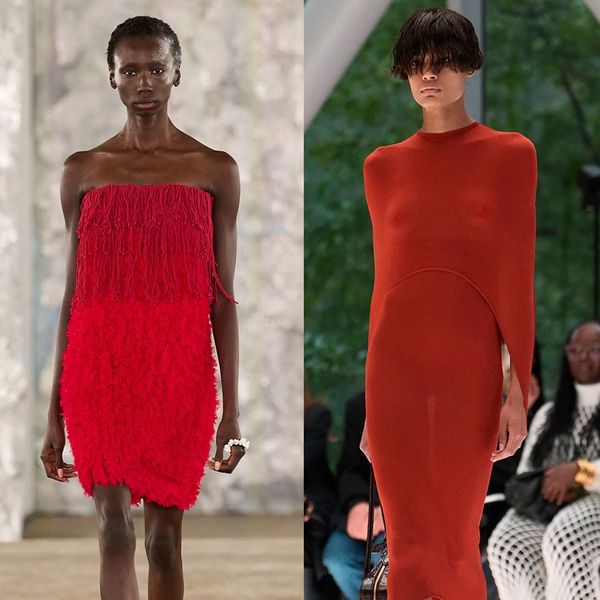Beauty
Can At-Home LED Light Therapy Change Your Skin?
Jessica Alba & Emma Stone are obsessed. Here’s why you should be, too.

17 August, 2019
10 November, 2021
Illustration
Meghann Stephenson
When it comes to anti-aging treatments, we don’t discriminate. We’ll try everything from ingestibles to rain dances—anything with the slightest chance of letting us age à la Julianne Moore.
So what’s our current obsession, you ask? LED lights. These babies have long been coveted by celebrities like Emma Stone and Katy Perry and are known to reverse aging, kill acne, and generally make the world a better place. And now—for as little as $250—you can splurge to keep one at home. Sure, it might sound odd to hold a bright, pulsing light to your face for extended periods of time, but—like we said—we’ll try just about anything. (See above.)
Now, before you start transforming your bathroom into a high-tech LED playground, pause a moment. There’s much to know about color light therapy. And we’ve enlisted the help of not one, but two experts to give us the full rundown. Shani Darden is a Los Angeles–based aesthetician with a roster of clients that includes Jessica Alba, Chrissy Teigen, and Rosie Huntington-Whiteley. (Perhaps you’ve heard of them?) Tracie Martyn is an East Coast skin-care guru and the woman at the very top of Rihanna’s Rolodex. And Anne Hathaway’s. And Beyoncé’s. NBD.
So what’s our current obsession, you ask? LED lights. These babies have long been coveted by celebrities like Emma Stone and Katy Perry and are known to reverse aging, kill acne, and generally make the world a better place. And now—for as little as $250—you can splurge to keep one at home. Sure, it might sound odd to hold a bright, pulsing light to your face for extended periods of time, but—like we said—we’ll try just about anything. (See above.)
Now, before you start transforming your bathroom into a high-tech LED playground, pause a moment. There’s much to know about color light therapy. And we’ve enlisted the help of not one, but two experts to give us the full rundown. Shani Darden is a Los Angeles–based aesthetician with a roster of clients that includes Jessica Alba, Chrissy Teigen, and Rosie Huntington-Whiteley. (Perhaps you’ve heard of them?) Tracie Martyn is an East Coast skin-care guru and the woman at the very top of Rihanna’s Rolodex. And Anne Hathaway’s. And Beyoncé’s. NBD.
How Does It Work?
“LED therapy is actually quite simple. It works by penetrating the skin with high-energy beams,” explains Darden. “The rays tunnel into your skin and jump-start internal processes, from circulation to collagen production. These at-home versions are less potent than professional lights, so they must be applied directly to the skin to achieve the same level of effect.”
What Are the Benefits?
“Depending on the color of the light, LED therapy can target any number of skin issues,” says Martyn. “Red for fine lines and wrinkles, blue for acne, amber for collagen, and green for hyperpigmentation. Some lights blend multiple colors, but many at-home versions are single-colored. The most important thing is to determine exactly what you’re trying to correct, and then choose a light targeted to that specific issue.”
Do They Actually Work?
“I use LED therapy on all of my clients,” says Darden. “For a few of them, blue LED therapy was the only thing that could get their acne under control. And 100 percent of my clients who use a combination of red and amber lights say they see a difference in fine lines. I actually use that combination on my own skin.”
How Do I Use It?
“There are a variety of different brands that make at-home LEDs,” explains Darden. “I like LightStim best ($250), and the more expensive Deesse ($2,500). Both of them sit right on your face, leaving [your] hands free. Each brand has their own instructions on how to use them.”
How Often Should I Use It?
“The benefits of LED lights are cumulative,” says Darden. “So if you’re going to spend all that money on the product, you need to be diligent. Everyone has their own routine, but I recommend five times per week. Sure, you’ll see some results when using it less often—but they won’t be nearly as effective.”
Is It Safe?
“LED lights were made famous by NASA,” explains Martyn. “[They’re] used to heal astronauts up in space. They’ve been studied a lot and aren’t dangerous because they don’t contain UV rays. If you’ve been diagnosed with any serious disease, however, it’s always best to check with your doctor before use.”
Even for My Eyes?
“The lights always come with goggles,” says Darden. “But that’s really just to combat brightness from the lights. But if you have really sensitive eyes, it’s definitely best to wear them.”





